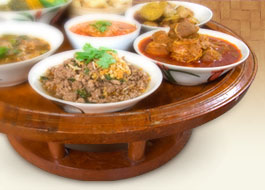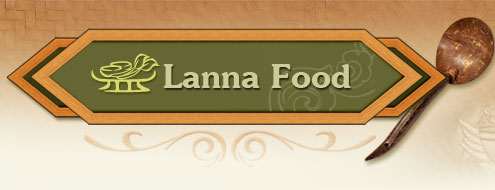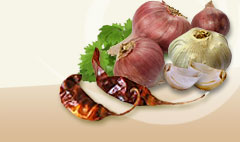Onions |
|
|
 | Allium |
|
| |
 | Liliaceae |
|
| |
 | Onion |
|
| |
 | Hom farang, hom yai (Central), hom hua yai (Southern) (Phennapha Sapcharoen and Kanchana Diwiset, eds., 1999, p. 224) |
|
| |
 | Biennial herb, colors vary depending on varieties, white, yellow, red, with different chemical components. Leaves hollow, long, acuminate. Flowers small umbels. Propagates by mature bulbs kept 2-6 months after trimming off the roots and dry leaves, planted in rich moist soil and covered with rice straw or husks. (Phennapha Sapcharoen and Kanchana Diwiset, eds., 1999, p. 224) |
|
| |
 |

100 gm. contains energy 38 kilocalories, calcium 30 mg., phosphorus 44 mg., iron 1.0 mg., Vitamin B1 0.03 mg., Vitamin B2 0.05 mg., and Vitamin B6 0.1 mg. (Phennapha Sapcharoen and Kanchana Diwiset, eds., 1999, p. 224) |

Its pharmaceutical properties are similar to garlic though slightly less. (Phennapha Sapcharoen, Kanchana Diwiset, eds., 1999, p. 224) |
|
| |
 | Phennapha Sapcharoen and Kanchana Diwiset, eds. (1999). Mai Rim Rua: Samunphrai Kap Wattatham Thai. Nonthaburi: Institute of Traditional Thai Medicine. |
|
| |
|
|




